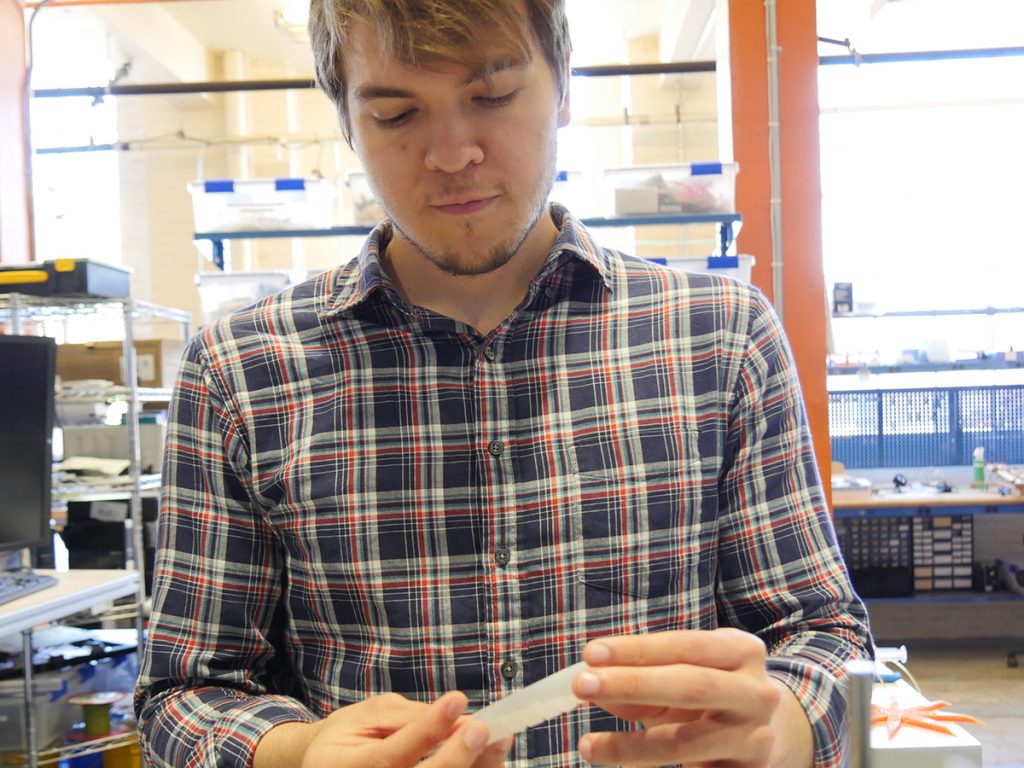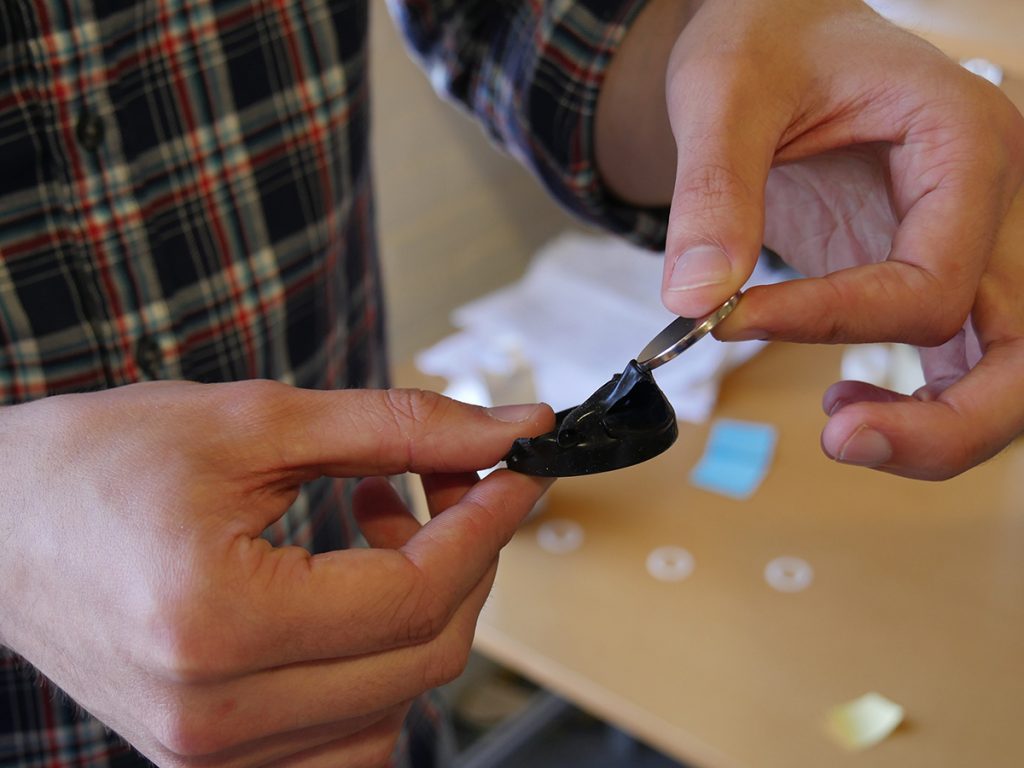
Opposites attract, and with funding from the National Science Foundation, Nick Bira, a doctoral student in robotics, is incorporating magnets (traditionally hard and rigid) with robots that are soft and pliable.
He was awarded a prestigious Graduate Research Fellowship to support this work. The fellowship recognizes and supports outstanding graduate students in NSF-supported science, technology, engineering, and mathematics disciplines who are pursuing research-based graduate degrees at accredited United States institutions. Past fellows include numerous Nobel Prize winners, U.S. Secretary of Energy, Steven Chu, Google founder, Sergey Brin, and Freakonomics co-author, Steven Levitt.
Bira is examining ways to utilize magnetically responsive elastomers — rubber-like materials with embedded magnetic particles — in soft robotic applications.
“You can make many interesting mechanisms and develop potential strategies for robots that use this material in creative ways,” said Bira. “I want to explore ways to use the material properties of the robot itself to perform different tasks that have not been done before.”

According to Bira, little research has been done with soft robotics and magnetism. “We’re talking about rubber, and magnets are typically hard, rigid, concrete things that might be powered by electronics,” he said. “My work is trying to bridge that gap.” He thinks he can do that by making the soft materials magnetic.
One of the motivations for his work is the potential for soft robotics to assist in biomedical engineering. “When it comes to assistive devices or prosthetics, there seems to be a natural fit for things that are soft, like humans,” he said. “I think my work will be able to assist toward that goal.”
The NSF fellowship will provide him full funding for the remainder of his doctoral program. “This will free up my time that would otherwise go to working as a teaching assistant or working on a professor’s grant funds.”
This is not the first time that Bira has benefited from NSF funding, nor his first time studying robotics at Oregon State. While he was completing his undergraduate degree at the University of Missouri, he spent a summer participating in the NSF-funded Research Experience for Undergraduates in Oregon State’s robotics program and worked with Yiğit Mengüç, assistant professor of robotics, to develop electrically-controllable, hydraulic valves for use in soft robotic applications. “That was a great experience,” he said, “and it really drove me to come here for graduate school.”
Bira’s graduate advisor is Joe Davidson, assistant professor of robotics.
CATEGORIES: Uncategorized
